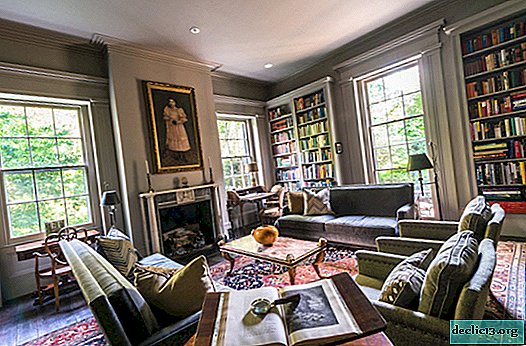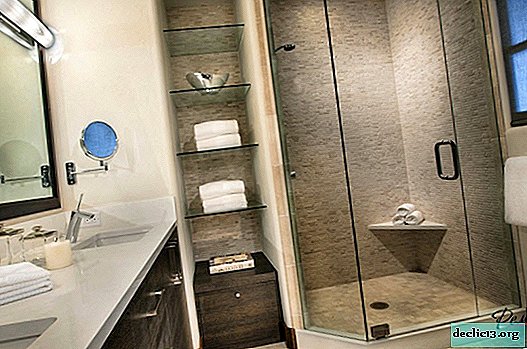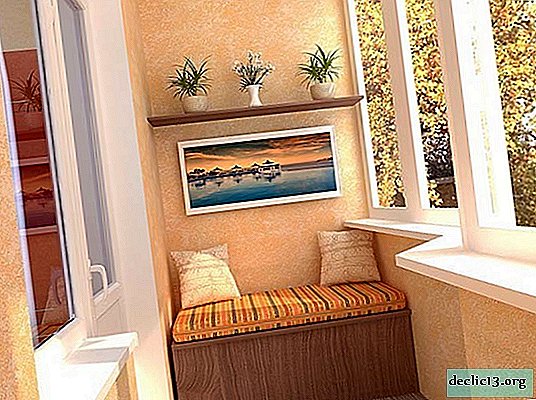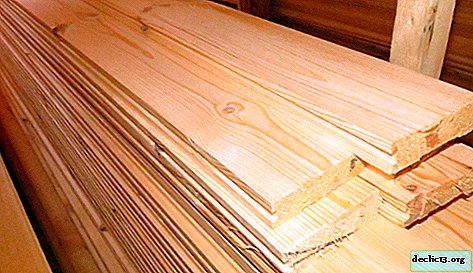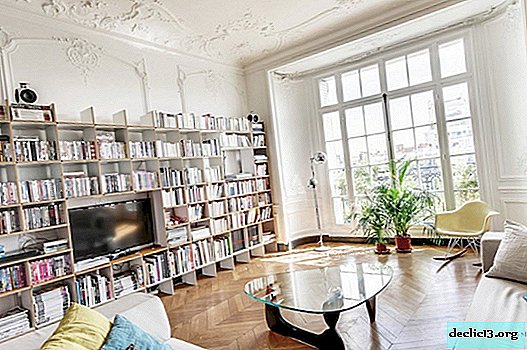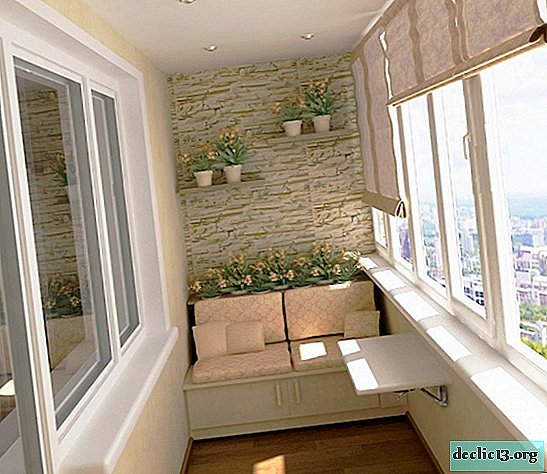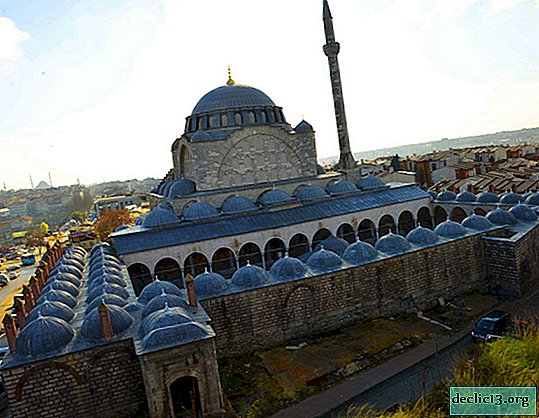Angkor - a huge temple complex in Cambodia
Angkor (Cambodia) - the center of the ancient Khmer Empire, a complex of temples that have survived to this day. This cultural heritage is a UNESCO World Heritage Site and is rightfully considered the country's most popular attraction. How to get to Angkor, the schedule of work and the cost of visiting temples are all the information necessary for a successful trip in this article.
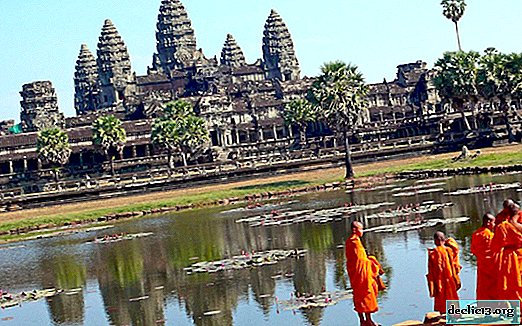 Angkor Wat
Angkor WatDo not confuse! Angkor is an ancient city, on whose territory there are more than 20 temples, among which the largest is Angkor Wat.
History tour
The construction of the Angkor complex was initiated by the founder of the local dynasty - the prince who declared the independence of Cambodia (today Cambodia), Jayavarman II. Since then, almost every king erected one or more sacred buildings during his reign, often marking a certain event. The construction of the complex was completed in 1218, after the death of Jayavarman VII, by whose order the temples of Preah-Kan (in honor of the victory over the Tyamas), Ta-Prokhm (in memory of the mother of the majestic ruler) were erected.
Interesting fact! The largest temple in history, Angkor Wat was built over 30 years. It occupies the same territory as the Vatican City.
The majestic Khmer empire fell in the middle of the 15th century as a result of the centuries-old struggle with the tamiam and thai. In 1431, Siamese troops occupied Angkor, and all its inhabitants left their homes, deciding that it was better to live in peace, albeit away from their homeland. In the end, the devastated city, along with all the temples, swallowed the jungle.

Angkor was rediscovered in 1861 by the French scientist Henri Muo, but because of the difficult times in the history of Cambodia, accompanied by bloody wars, no one was engaged in its restoration. Only after 130 years, UNESCO will make the temple complex a World Heritage Site, and an organization will be created in China that will unite specialists who are still engaged in the restoration of this magnificent landmark of Cambodia.
Amazing details! All temples of Angkor are built without the use of cement and other bonding materials.
Where is Angkor
You can get to the temple complex by tuk-tuk (about $ 2), bicycle ($ 0.5 / hour) or taxi (from $ 5), after having previously arrived in the city of Siem Reap, located in the west of Cambodia. To do this, you can use:
 Siem Reap Airport
Siem Reap Airport- By plane. Siem Reap International Airport accepts flights from Vietnam, Thailand, Korea and China;
- By bus. Every day, cars depart from Bangkok on this route (from Mo Chit bus terminal at 8 and 9 am, from Ekkamai terminal every two hours from 06:30 to 16:30), Sihanoukville (the distance to Angkor and Siem Reap is 500 km, so it is better to give preference $ 20 night bus; departure at 20:00 from the central bus station) and Phnom Penh (several dozen cars per day). Tickets cost from 6 to 22 dollars, you can buy on the spot or on the Internet (ppsoryatransport.com.kh);
- By boat. A small boat runs between Siem Reap, Phnom Penh and Battambang daily from July to September, the fare is $ 25-30. Traveling on Tonle Sap Lake takes 5-6 hours.

Read in detail how to get to the city of Siem Reap.
Compare accommodation prices using this form
Angkor schedule and cost of visiting
Ticket offices of the temple complex open at 5 am and work until 17:30, at the same time tourists are allowed here. According to official rules, all travelers must leave the territory of Angkor before 18:00, but if you do not get caught by the police, you can stay there a little longer and enjoy the beauty of the temples in the setting sun.

The price of entry to Angkor varies by the number of days. There are three options in total:
- $ 20 one-day visit
- $ 40 three-day cultural enlightenment;
- A seven-day walk through the temples for $ 60.
You can use a subscription for three days within a week from the moment of purchase, and a subscription for 7 days will be valid for a month. On the front side of such a ticket should be your photo, it is made at the box office directly upon purchase.
Note! You can buy a ticket day-to-day only until 17:00, the remaining half an hour sells subscriptions the next day.
Angkor structure (Cambodia)
On the territory of the ancient city there are more than 30 temples, which occupy an area of 500,000 square meters. It’s absolutely unrealistic to visit them all in one day, most often travel agencies and travelers who have visited this Cambodian attraction, are advised to spend from three to five days on a walk around the temple complex.

The most popular route in Angkor is designed for three days and is divided into visits to the temples of the small circle, the big circle, as well as distant temples, which reach the most persistent and curious.
Advice! If you intend to visit the temple complex with a company, rent bikes or bicycles. This will help you save time and effort (since the length of the same route through the temples of a small circle is 20 km), and not lose your rented property if you are distracted to take a photo of Angkor Wat and other places.
Small circle
These include the temples that every traveler must see - the most magnificent, beautiful and valuable. The distance of the route is 20 km, designed for one day. The direction of travel is shown in the titles of the following sections: first Angkor Wat, then Angkor Tom, etc.
Angkor Wat
This temple occupies a vast territory and can rightfully be considered a whole complex. It is surrounded by a moat, which during the rainy season is filled with water, around there are many trees, green grass, flowers and wild animals.

In the center of Angkor Wat, there is a mountain temple, built in such a way that on its either side you can see its five identical turrets. The second key attraction of the complex is the library - a one-story building surrounded by palm trees and tourists.


No less interesting are the galleries of Angkor Vata, which you can look at from above, climbing the stone stairs in the backyard. In total, 8 galleries with bas-reliefs densely covering the walls were built on the territory of the temple. The most famous among them is the Gallery of Hell and Paradise.
Advice! If you want to take uninhabited photos of Angkor Wat, wait until the sun rises completely and look into the backyard of the temple. At this time, all tourists who met the dawn set off to rest, and new arrivals dispersed along the main parts of the complex.
Angkor Tom
This is another attraction from the list of what you must visit in Cambodia, the last capital of the Khmer empire and the majestic city of 13-14 centuries with a population of more than a million people. Its name explains its popularity in the modern world - "Big Angkor" really impresses with its scale, unusual architecture, harmony and splendor.

The structure of Angkor Thom is very logical - the city is a square with stone walls, inside which there are various buildings. The most significant of them:

- Bayonne is the second, after Angkor Wat, Cambodia's visiting card. The sacred temple is famous for its faces carved on each of its towers. Their total number is about 200, according to legend, they all display King Jayavarman VII in a different mood. In addition to the many-faced towers, in Bayonne you can see a variety of bas-reliefs, a sacred reservoir, a library, prasat and sanctuaries. The temple is located in the very center of the city.
- Bapuon, reflecting Mount Meru in its form, was not particularly strong even during the existence of the Khmer Empire. Through the efforts of restorers, it was restored and today it is a multi-level building surrounded by many reservoirs.
- Phimeanakas. It was in this building that the king of Cambodia of those times lived, so they did not save on the materials from which it was built. The stone temple is still in good condition, but it is completely absorbed in the jungle, so you can’t look at it from the outside even from the top level (therefore, if you don’t really want to, you can not climb to the very top along the dilapidated steps), but inside you can admire the unusual galleries.

In addition, in Angkor Tome there is the Terrace of the Leper King, the Terrace of the Elephants, several prasats, the Victory Gate and an unusual bridge with figures of gods and demons. The recommended time for visiting this attraction is 3-4 hours.

Advice! Go to Bayonne before sunrise to avoid crowds of tourists and get the most spectacular photos.
Ta Prom
Another of the most beautiful buildings in Cambodia is Ta Prohm, which became popular after the shooting of the film "Lara Croft: Tomb Raider" and today bears the proud name of the Temple of Angelina Jolie. For seven centuries this building played the role of a monastery and university, where local residents received education and scientific research.

Ta Prom is many times smaller than Angkor Wat or Angkor Tom, on its territory there are no separate significant attractions, they are all part of the temple itself. Thus, Ta Proma galleries are one of the most interesting in the whole complex, as they are built into one another and resemble a small maze.

Another feature of the temple is its proximity to the jungle - the roots of the trees encircle the stone walls and amaze with their size. To this day, Prom still cannot be cleared of vegetation, because it was due to it that the building was preserved to our times.
The mystery of the millennium. Among the picturesque bas-reliefs of the temple there is an image of a dinosaur. It is not the first year that both scientists and tourists have been struggling with the question of what Ta Prom is doing on the walls of this ancient creature.

Small temples of a small circle

Pre Kan (built by the last king of Cambodia in honor of his father), Ta Keo (the highest mountain temple, the construction of which was not completed, as lightning got into the building, which was considered a bad sign) and Phnom Bakeng (temple in the rock) fell into this category with a panoramic view of the whole of Angkor). The total duration of the visit for all three buildings is 4-5 hours.
Big circle
 Banteay Kdey
Banteay KdeyThe route includes more than ten small temples, the total duration is 25 km. The most popular buildings that are worth visiting in the first place:
- Banteay Kdey. It was built as a Buddhist temple, consists of many galleries decorated with bas-reliefs.
- Pre Rup. Temple Mount, created in honor of the god Shiva.
- Banteay Samre. It is distinguished by grace of architecture and unusual carved walls. It was erected in honor of the ancient Indian god Vishnu.
- Ta Som. A place for spectacular photographs depicting the unity of nature and ancient buildings.
Distant temples
This category includes several temple complexes located at a decent distance from the center of Angkor. You can get there only by taxi or a rented car (you should not take a bike or a bicycle, otherwise you will get bogged down in the dust of Cambodia dirt roads). The cost of such a trip is $ 50-60, so try to find travel companions or become one yourself.
Beng Melia
Located 67 km from Siem Reap, this temple is definitely worth your visit. At the entrance you will be met by unusual guards in the form of seven-headed snakes, and once inside you will understand what the charm of stone chaos is. The peculiarity of Beng Melia is that the hands of restorers did not touch its walls, so you have a great opportunity to see it as it was found in the late 19th century.
Banteay SreyImportant! The cost of visiting the temple is $ 5, not included in the general ticket of Angkor.

It is called the "Fortress of Beauty", the citadel of women and the pearl of Angkor. This is a unique building, not like all other buildings of the complex due to:
- Its size. Banteay Srey is really miniature, which is very impressive, especially after visiting Angkor Wat;
- Materials. The temple is built of pink sandstone (the rest is made of yellow), which gives it special charm and beauty, especially early in the morning;
- Handmade carvings and bas-reliefs that cover the walls of Bantei Sreya.
On the territory of the temple there is a library, a central sanctuary, many statues. Recommended visit time is 2-3 hours. Distance from Siem Reap - 37 km.
Rawlos
This is not a whole complex of temples, combining Bakong, Pre Ko and Loley, located 17 km from Siem Reap. Its main feature is plants. Fragile flowers, which are strewn with the entire territory of the complex, come to replace the dusty ficuses that capture the entire building.
Phnom Kulen
This place is sacred to all residents of Cambodia, because it was here that 1200 years ago the country's independence was proclaimed. Here is the famous statue of the reclining Buddha, a sacred temple, where pilgrims annually go, a river of a thousand lingams and the most picturesque waterfall in Cambodia.
The cost of visiting Phnom Kulen is $ 20 (paid separately from the total ticket to Angkor), located 55 km from Siem Reap. You can only get by taxi or rented car.Find out RATES or book any accommodation using this form
Tips and tricks for visiting Angkor
- The rules of visiting Angkor say that you can’t enter the temples with bare hands and feet, so take a light shirt and harem pants with you;
- If you want to meet the sunrise in a magical atmosphere, come here at 6:30 in the morning;
- Came to the temple at rush hour? Sight the sights counterclockwise - in the opposite direction to that which guides most often use;
- Beware of the monkeys - these little thieves steal everything that is bad. If you want to take some pictures with them, go to places where there are many tourists - there they are well-fed and less arrogant;
- Take a lot of water, and, preferably, food, since there are practically no cafes and shops on the territory of Angkor (there are no establishments with adequate prices at all);
- Seriously approach the issue of choosing shoes for a walk around the complex. As in the whole of Cambodia, the air temperature in Angkor can rise to + 35 ° C, but don’t wear sandals or slippers, since there are many impassable places near the temples littered with stones;
- Be careful when walking along untouched paths and deep jungles - you can meet snakes there;
- Do not risk your life climbing the ruins of temples. Remember that Angkor is more than a thousand years old and in some places its walls can simply form like a house of cards;
- Do not wear white and black clothes - dust and dirt from the stones of Angkor have not been removed for many centuries.


A map of the city of Siem Reap, on which sights are marked, including Angkor Wat and some important infrastructure objects.
An interesting and informative video - how Angkor looks through the eyes of a tourist.
Angkor (Cambodia) is a unique place worth seeing with your own eyes. Have a nice trip!

